All about dishwasher sizes

The need to learn everything about the size of dishwashers is often dictated by the limited space of a functional room, which is common in small apartments. Dimensions are the first thing that is paid attention to, and only then the buyer learns about other features of these convenient units: different installation methods, washing classes, capacity, set of functions, water consumption, energy saving, chamber volume.

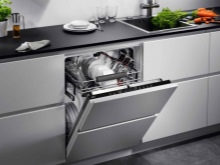

A wide range of products, dictated by market demand, makes it easy to select the desired parameters.
What does size affect?
The dimensions of the dishwasher are a fundamental criterion for choosing modern kitchen equipment designed to facilitate the hard work of the hostess. Washing machines have long supplanted ungrateful hand washing. Using these devices is a way to save yourself another tedious type of homework. An invaluable advantage is the ability to save hands, and at the same time - to get much better cleaned dishes. Limited space leads to the need to accurately measure the free space, to calculate the size of the niche available to the owner for installation.

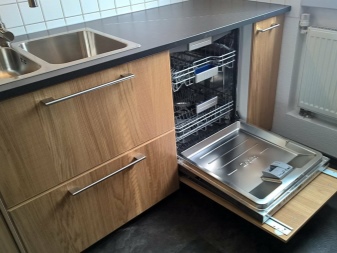
In proposals from manufacturers of household appliances, you can find descriptions of compact, narrow and full-size units, the dimensions of which determine:
- performance and load volume (the number of sets washed in one session);
- intended purpose (for a large family or a single person);
- washing quality (there are machines that can wash the most old layer of dirt from the plates);
- occupied space and ergonomic placement (ease of access, absence of corners and protruding parts, minimization of domestic injuries);
- non-trivial place to install (compact ones can be installed under a sink or on a table, near a water source);
- embedded can even be placed in a kitchen cabinet, and freestanding require their own space, but they are large in capacity and can be equipped with additional functions and devices.
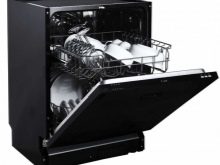
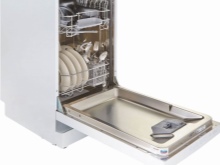
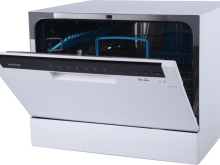
It would be wrong to say that small-sized machines are initially inferior to stand-alone ones, cannot be energy-saving or do not have additional functions.... Products from renowned manufacturers minimize the loss of space while maintaining functionality, but they are designed for small spaces. Full-size units are suitable for large kitchens, often with non-standard layouts, but they are also installed in a small room with a minimum of furniture and a lot of free space.
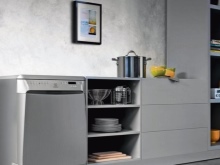
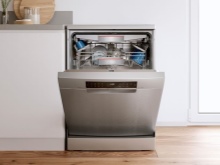
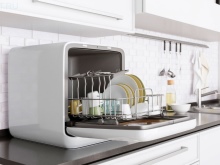
Sizes of different models
In supermarkets, you can find a wide variety of dishwashers, but different types of units (freestanding and built-in) come in certain sizes. They depend on kitchen furniture, the dimensions of which are related to the requirements of ergonomics, convenience, and the growth of the worker in the kitchen.
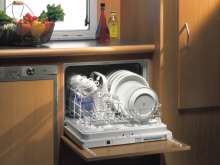

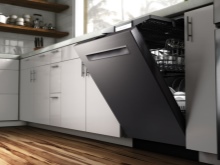
Therefore, in the size of the PMM, certain patterns can be noted.
- Standard headsets are made for the average person, people of small or large stature have to individually calculate the hanging height of kitchen cabinets and worktops.
- Height matters in both standalone and built-in models... But in the first case, it is due to the convenience of a person, and in the second - a niche into which it will be built.
- Each type has height restrictions: full-size ranges from 82 to 97 cm... And this is also due to the ergonomics of use.
- Minimum units are limited in width, which depends on the parameters of standard furniture.
- It makes sense to buy a car without a top cover, if you plan to place a countertop on it or place it behind a kitchen cabinet door.
- Household appliances are chosen depending on the intended location: low is suitable for placement under a table, sink or washbasin, overall devices must be purchased after carefully carried out measurements.
- Stationary assumes taking into account the location of the outlet, drain, water supply system, mobile (although it is not very convenient) can move during the wash, if there is no other way out.
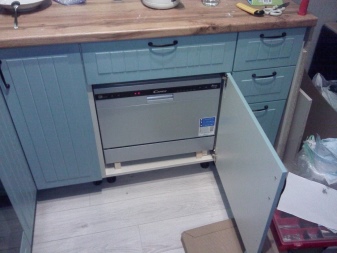
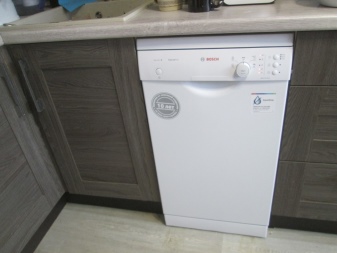

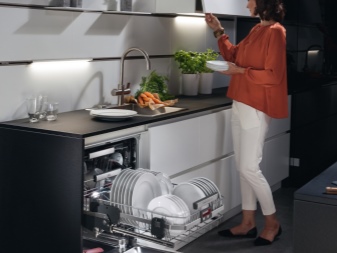
The possibilities of placing small models depend on the depth, and if we do not take into account the non-standard size options (which are also in demand at the pace of modern individual housing construction), then it is designed for the average size of kitchen furniture.
Fullsize
Until recently, these varieties were the most common among manufacturers' proposals. Mostly they are free-standing. Now the built-in model, hidden behind the door of a separate cabinet, is also considered the standard. The parameters are variable, but not enough to distinguish separate categories:
- height - from 80 cm to a meter, although the minimum and maximum parameters are rather the exception than the rule;
- width devices - 55–65 cm;
- depth most often coincides with the width;
- standard parameters - 60x60x85 cm, but if you wish, you can find the necessary dimensions, the need for which is caused by the requirement to leave gaps between the walls of the furniture and the PMM.
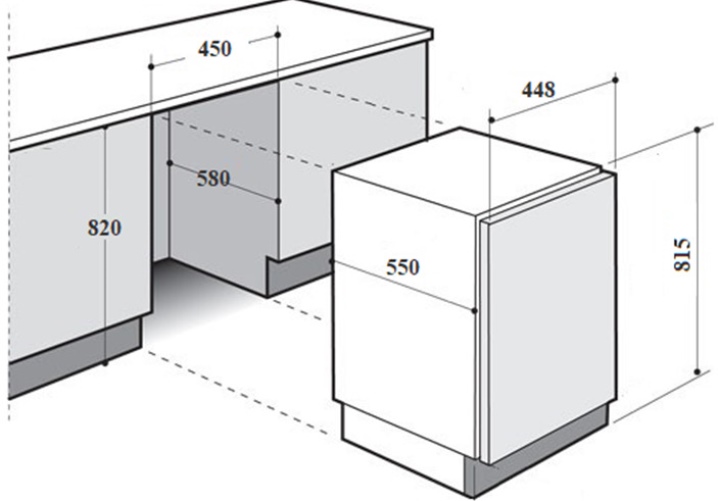
A large machine has a number of advantages: the amount of work that reduces the number of sessions for washing dirty dishes, the ability to wash pots and pans, the number of compartments and useful functions. However, the maximum size does not always make sense - in a small room, a small family, its use is inconvenient and irrational.

Washing a small number of plates is an additional waste of water or electricity, and collecting dishes for one full load session is contrary to the requirements of sanitation and hygiene.
Compact
An excellent option is one in which the width varies from 35 cm (there is also less), while the standard width is from 55 to 60 cm, the depth is no more than 55 cm. The advantage of this variety - in numerous variants of spatial arrangement. It can be hung on the wall, mounted in a section of a furniture set of suitable sizes, built into a wall niche, placed under a washbasin or sink, on a wide window sill or just under a kitchen table.

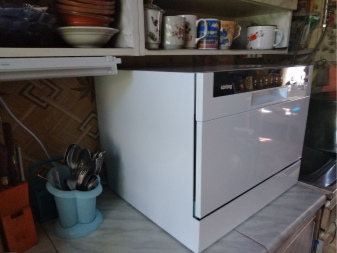
They are conditionally subdivided into desktop, floor and universal. The first two types, if desired, can be easily turned into the third. The disadvantages are small volume and minimal performance. A family with more than two people can use a compact device, but this means an increase in the number of sessions, which means an increase in water and electricity consumption, which is of great importance in modern conditions. In small kitchens, it becomes necessary to buy a car with a shallow depth, which excludes the possibility of washing pans and pots.
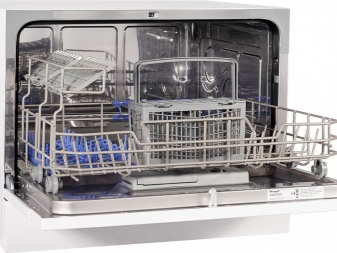
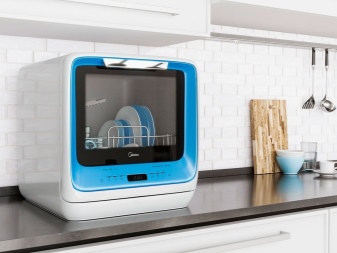
Narrow
Also, such dishwashers can be free-standing and built-in. The design solution limits the width to 45 cm. Yielding to full-size models in volume, they are still more functional than compact ones, they can easily serve a family of 3-4 people, accommodating up to 19 dish sets (conventional unit of measurement with items for one person).This means that the hostess can wash all the dishes in a day, if not all household members have dinner at home. The narrow machine has several popular places to sit in the kitchen. She washes both glasses and pans, and in height it almost does not differ from a full-size one (up to 82 cm), in depth it is limited to 60 cm.
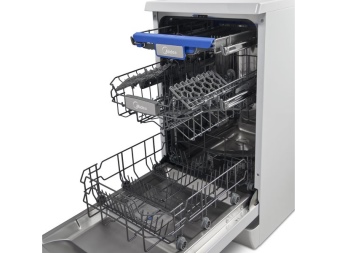
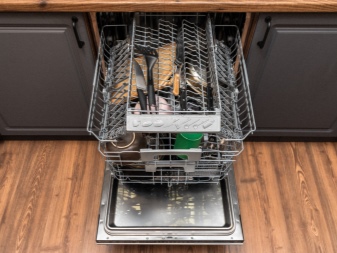
The width of such a model can reach 55 cm, but 45 cm is the most common and most demanded size in the case of both built-in and freestanding dishwashers.
How to choose the size?
Giving advice on the choice of any household appliance primarily means recommending weighing, careful measurements, studying ergonomics and safety rules... Price is important, but not the main component. The consumer often pays hefty sums simply for the brand name, rather than for additional functionality and type of management.

Size is the determining factor when it comes to economical use of a small space, but it is not always the only one, even if the owner has a large area at his disposal. You need to buy like this to achieve the optimal balance between size, performance and equipment:
- models with minimal parameters are convenient to place, but they do not allow washing large-sized dishes, they are not always equipped with holders for glasses, they are not suitable for a large family;
- it is better to give preference to a narrow model with a rich set of functions and decent volume, rearrange the kitchen, get rid of unnecessary furniture;
- for your own home with a spacious room for cooking, it is not always rational to take a full-size unit - it is appropriate only if the house is constantly visited by guests or a large family lives.


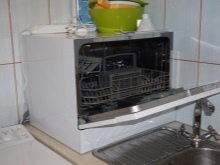
Sometimes the choice can be influenced by characteristics: separate mode for baby dishes, delicate, quick wash, intensive, type of drying. Having tried, you can find a combination of functions, parameters, water and electricity consumption. You will have to compromise with some requirements (this is important for owners of small kitchens), but it will be possible to place and use comfortably without any problems.
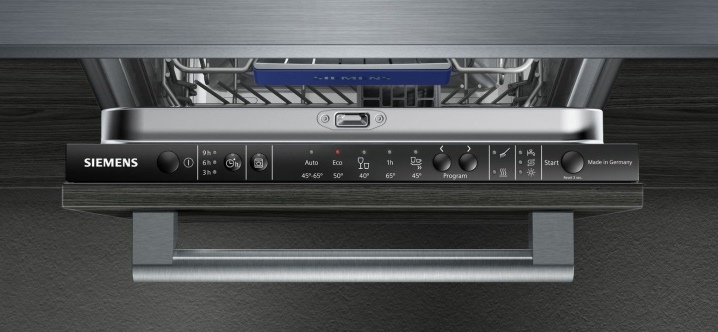
How to calculate for embedding?
Installing a dishwasher in furniture makes the kitchen more aesthetically pleasing, but requires greater accuracy in determining the allotted place and taking its measurements. The results obtained are not an exact guideline, but an approximate indicator from which they start when buying a device. The height, width and depth of a compartment, niche or cabinet, measured with high accuracy, are reduced by 1–2 cm (you can find the figure 0.5 cm, but it does not meet safety requirements).
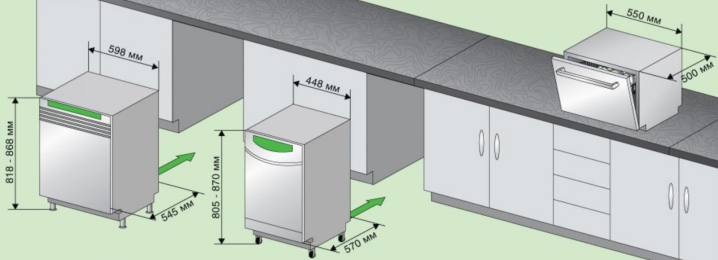
The discrepancy between the dimensions can complicate the installation work - you will need to expand or break the partitions, and no adjustable legs will save the situation.
For installation, choose a place at a distance of no more than 1.5 cm. Exceeding this gap means drain problems and reduced efficiency. Installation work begins with measuring the unit: it is necessary to correctly make holes in the rear wall for wires and hoses. Craftsmen avoid unnecessary hassle by simply deleting the fragment. If we are talking about installation in a wall niche, you need to take care to hide communications from prying eyes. If the dishwasher is planned to be placed under the worktop, it is necessary to lay special layers to protect it from steam and moisture. Upholstery with special materials that are easy to find on sale will not only protect the wooden surface, but also contribute to additional sound insulation and prevent deformation.
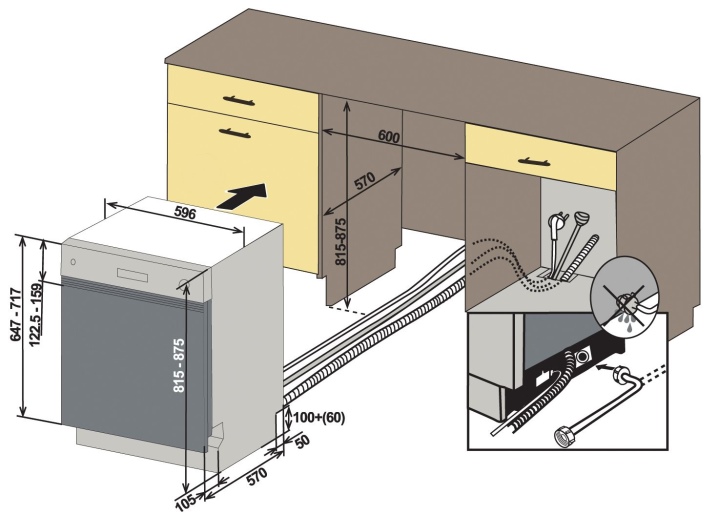













The comment was sent successfully.